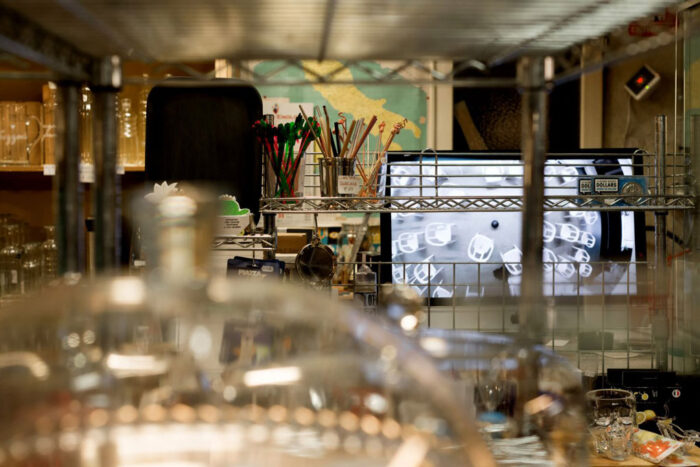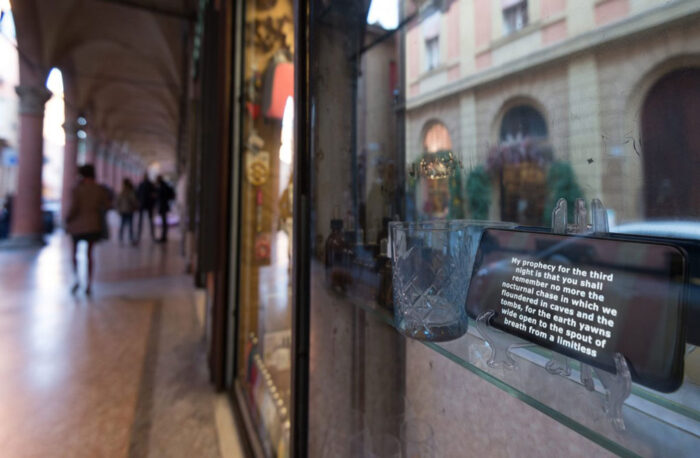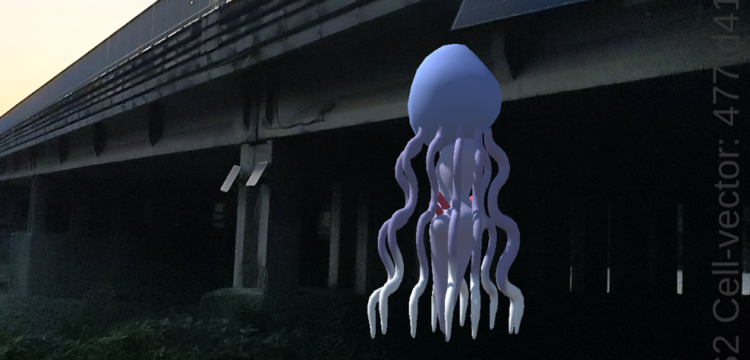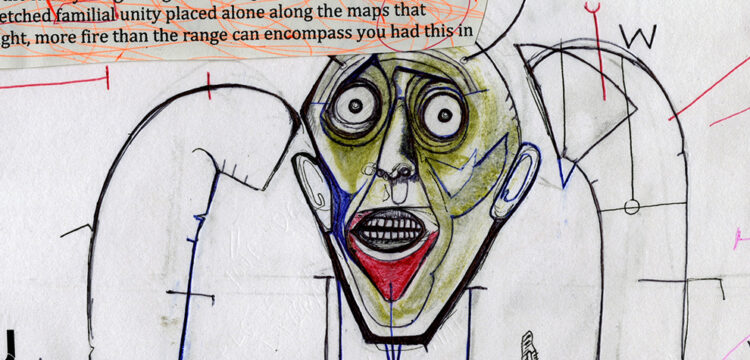A Song Filled with Fire
FROM THE DEAD AIR ORGY: On The Nature of Things by Simon Vincenzi
FROM THE DEAD AIR ORGY: On The Nature of Things by Simon Vincenzi is a series of five broadcast chapters being transmitted live from a hidden location somewhere on the outskirts of Helsinki. It revolves around the poem On The Nature of Things by the Roman poet Lucretius (c.99BC – c.55BC). His epic work explores a scientific reading of the world through physics and atomic theory: that everything that exists is made up of matter and empty space and that atoms are the building blocks of what we perceive as reality. FROM THE DEAD AIR ORGY gathers Lucretius’s poem and uses it as the perimeter to ask a series of questions about the future of the universe. Using an Artificial Intelligence text generator it gathers from the internet, in response to Lucretius’s ancient work, a generated text that prophesies its own future. This wild, impenetrable and unpredictable text is then transmitted through each of the five broadcasts and becomes a backdrop to what is taking place in this hidden location. Each broadcast unlocking different narrative possibilities from a location an audience can now no longer enter. Over the five nights a network evolves of prophecies, cosmology, covert shipping exports, hidden caves, survivalist prepping and pole dancing.
The title of the series refers to the term “dead air”—while waiting for a radio or television signal to be restored. FROM THE DEAD AIR ORGY: On The Nature of Things is a project by the British director Simon Vincenzi developed with sound artist Will Saunders and performer Kath Duggan, produced by BAD HOUSE Festival Helsinki. The event was the continuation of the first series THE DEAD AIR ORGY: The Song of Silenus (commissioned by Live Arts Week Bologna). This occasion has become hole #1 and inaugurated the first season of holes created by Xing as a temporary redefinition of a public space. Here following, the broadcast chapters #4 and #5.
15:10:2021
I will pay my respects with a song, filled with fire, the same as I fire an arrow with my bow and shoot with my bow a message in a flintlock that is destined to reach the throat
of the horseman of death.
I will sing so as to keep alive the longing for the deathless, and thus prevent the end of this world. In the end nothing remains except dust and ashes. Then my songs will bring glad tidings and they will leave a silent echo. After that, death shall destroy our lives, our bodies and our bodies will survive me, but their souls will follow me to the grave. I will shout with them, so as to awaken their senses and give them a glimpse of life before they pass into the dread abyss of the earth. My songs will be a warning to
those on earth who do not yet understand the true meaning of death.
This prophecy is not yet fulfilled. For indeed that swarm of insects that moths and wasps and dragonflies may be writhing in my mouth or trying to burn their wings in a fire I cannot fathom
The period of my vision has not yet come to an end. Perhaps my need for fuel will return and the fiery desire will be quenched. That means my words are altogether fallible . . . So many things can be in my mouth – wind and fire and the five elements that co-exist in
the cosmos – and yet none can fill my mouth with ever so great a quantity of fuel. But that abundance is within reach. For it is only those elements that co-exist in the whole of nature that play the most influential part. The whole world could be swept into a furnace of fire and be burned to ashes, if it had no frame or foundation. How can there be something that we see playing such an important part? I tell you that with any speed you may con- vince me of its nonexistence. So I may, too, when I pass away. But this apparition must be nothing but a dream or there can be no mention of the dream, when the
final utterance is required.
There is no certainty that anything exists from nothing. But if it does exist, there must be an origin for the appearance of the various things, and that origin must be in the universe as a whole, as definite as its elements are different. So long as the motions of the different atoms are in some way opposed to each other, there must be some source of those differences. If there were not some cause of their motions, there would be no
necessity for them to act as they do.
This prophecy is that every atom will be annihilated, the tiniest fragment will be
dissolved and a new frame will be established. The atoms will, as they are already beginning to do, assemble themselves again in new combinations. But all this will take place in such a way that there will still be complete matter in every atom, whose movements and motions will be determined by its essential nature. All the space that can be named or classed together will be dispersed through all the spaces and annihilated into every other atom. The atoms themselves will themselves perish, so that nothing will remain of their collective form.’ \
In this world they are bound by a fixed end. They cannot advance further and so their whole history must terminate. \
What, remains after the utter atoms are destroyed? So long as the air in the sky and the water under the earth are still and the waters are united, there is a need for them. For without these they cannot live. But it is unnecessary for them to reproduce their kind and exist. There is already enough air and water, so that all that is needed for life is some in another form. Therefore the latter must perish and be replenished by something new, because no new thing can be formed from existing matter. But how can the air or the water survive any more than atoms themselves do?

Everything is sustained by the principle of existence or annihilated, as it may be. But a new existence cannot yet be imagined, since the very atoms in everything are already destroyed by the end. \
The earth and its very earthling fragments will, in the end, cease to be. Hence, as atoms, they must perish by extinction. We may safely suppose that they, just as the sun and the whole outer world, are merged in an immense and total vacuum. Nothing can stand
still in a vacuum.
There is still an infinite space between atoms, so that nothing remains of their existing form. But this is necessarily connected with the earth, whose particles may still be called by different names. For we may refer them by a variety of names, and we can also distinguish between those atoms that are still alive and those that are still dead. \
I know that there is nothing now left on earth but water and air. We see the earthling trees cutting their way through the reeds with their bark and root. But such an earth is not wholly annihilated; the water remains and the air is also intermixed. So that the air must have been subject to destruction at some time and you will see that this time has come and gone. \
Again it is manifest that nothing can exist without any beginning. For everything in its own nature needs some beginning. But it does not matter whether there is one or many : each is as necessary as the others, since they differ in their need of an origin and in their respective ways of existing. For there is an essential aspect of things – the stability of their interconnection ; no disunion, no instability. For neither is anything born by chance or by any other power. The diversity in the combinations of things and their active forces is not and cannot be increased by any augmentation of these combinations. But anything which can act does so on account of some power that can impart action and stimulus to movement. And in fact that is why we see the world moving through
the whole.
Everything happens simultaneously and continually : things go from one state to another and go through transformations. To this in turn is related the fact that nothing can be without action ; for things cannot be without energy, nor can action without existence.
16:10:2021
My prophecy for the forth night is this, that I shall fail to see you there.
Whatever I have seen before, though my mind was not at rest, is no more to be considered than a man’s eyes might be till he saw with them,
What has been accomplished, or even conceived, does not succeed to the heart.
What I saw, though it must have been as fleeting as some fleeting shadow, yet not less real.
Does this not show that my mind itself has ceased to be the earth ?
The earth is now no more than a dream ; and the man no longer so situated can see anything with his eyes ; only a moving, visible image of the body itself.
For now, rather than before, he is no longer in the body of the earth but in another in which we cannot see him. This is because we have passed through the foot, but now through
the limbs, so as to no longer see them, but only an image.
Those that we now see are really but a repeated image of the things we had before.

If now, in the stead of the earth, or now of the sky, or now of fire, or now of water, or now of the ether, or now of air, or now of things in heaven and on earth, the mind has so completely disappeared, then the only way out is for the earth to be annihilated, the sky to be blown away, the earth to turn to ash, the lightning to escape and the ether to be annihilated, and henceforth there will be no other; or, if a new body can be formed, it will go by the name of fire and we shall thus learn that the mind, which was not ever yet generated, now remains that only possible substance and form. All this is from, since we saw that the mind itself had ceased to exist, the mind cannot now cease to be
generated.
The future is given the form of the void that lies between the fiery light that shineth in the veil of space.
Henceforth everything is no more to be thought of, but everything is actual.
For everything is an object of sense, and all objects are, in their entirety, matter. Similarly all events are cognizable, they consist of matter; for, since objects are atoms of matter, whatever one exists can be perceived as matter, in so far as it has the nature
of matter.
Whatever is composed of atoms cannot be so composed as to be existing. Why then should we suppose that matter is still the first matter ? . . . If we had learnt this at an earlier
date we should have held that the world could not exist.
The visible universe is finally \
but a brief blip in the vastness of eternity. The \ worlds, now we see, now we did not, were as varied and \
fraught with evils as they are now.

Everything in the visible world has undergone such change \ that none can tell whether it ever existed. For every appearance \ is but a figment of the mind.
And again, for the present, there is the space where no \ thing can be created. The waves of heaven \
and earth cannot all disentangle themselves in all their \ distress, since each of them is in the habit of clinging \ up to the ex-world where it is most safe. No creature \ can feed its sustenance anywhere else. There, the death \ of everything must be complete. Even the strongest limbs \ can no longer wrestle to the body, the cestus that holds \ them on ground they cannot climb out of. There, still no \ thing can grow and flourish. All is tormented by rumblings \ of unrest and agitation, by roars and growls of terror. \ Everything that once was does not seem to be there, nothing \ can live by. Where, then, is the world that ever was? Where \ did it come from? Where did it go? The universe itself \ can give no more light on this score than the sum-total \
of reality can.

Then – then will it burst the earth into a madling earthquake and fly athwart the sky like a cumulus and shoot up into the bright crescent moon, and thereafter form a single, large and immobile orb so that no further moon can be seen. Then the earth will be
wrecked and the earth rocked, so that the black cast of the centre and the wide circumference of it, will be jumbled together and ever so painfully diminished.
The earth will lie uncovered, darkened with gashes. A diamond will burst in its hand and plunge its halberd deep into its heart, where it will grind and crush it till the marble cogs of the earth are undone and the stone structure implodes and falls, crumpling and tottering, right down to the earth’s surface. There will be a great crash and the earth will convulse and convulse, till at last the lump of earth that was the earth will be
broken up and vanished away and a new world will have to be opened.
Then the babe of the earth will be born in a deep blaze of flame. A bright blazing fire will issue from its swelled breast and for ever grow and blaze high up into the sky till it engulfs the whole sky. Then the bodies of the sun and moon and stars will melt into ashes and the whole world will rove wild in the midst of an everlasting flame and everywhere the dusky fire will merge into a larger and more abiding fire and the flaming flower of the earth will rise out of the ashes and blossom forth. The sun and moon will then vanish completely into the clouds, the dawn, when it has set, will be invisible, the daylight will be dim and the earth will be choked with a dew that scatters flame in
various directions. So it will be.
The AI thinks this is a good place to end the text. The AI thinks this is a good place to end the text.



